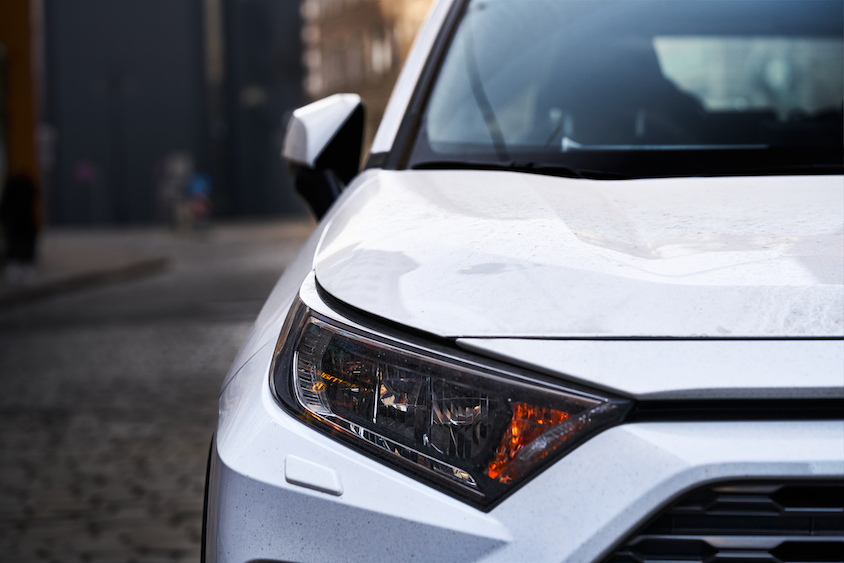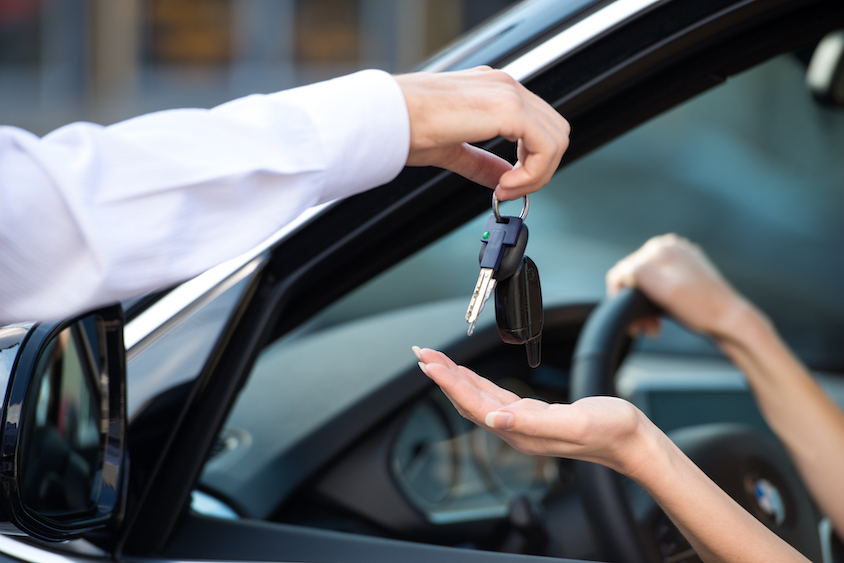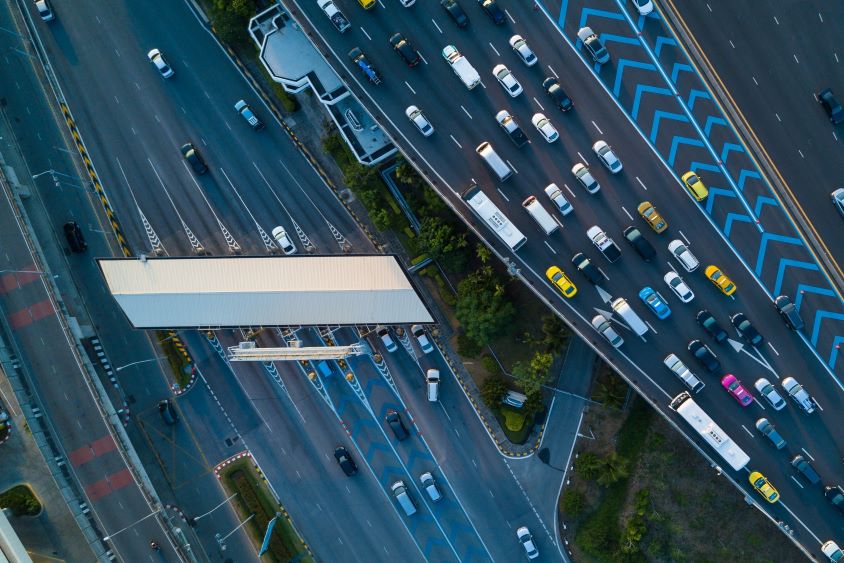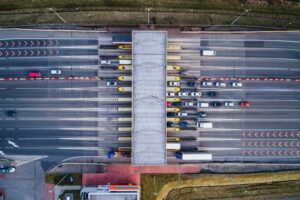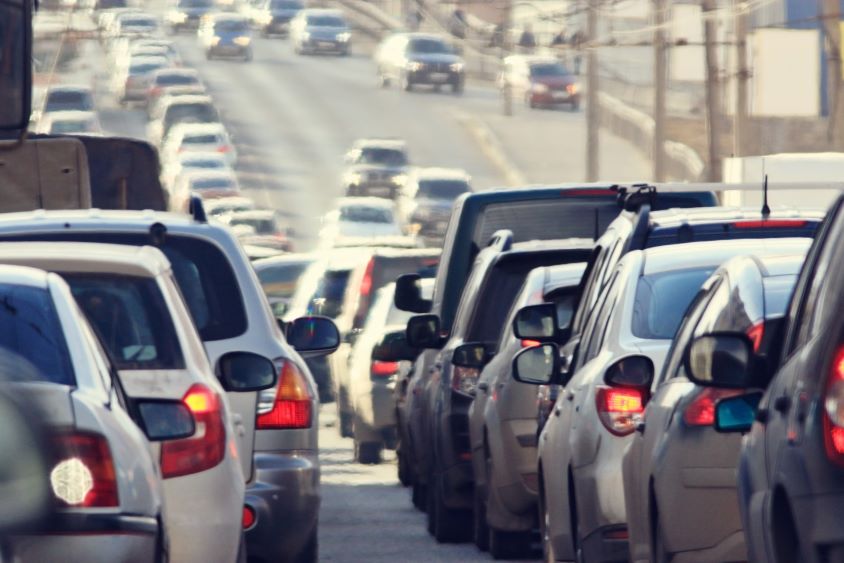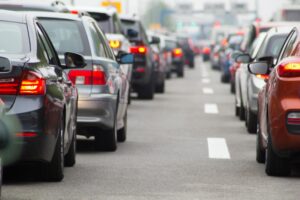It’s amazing what commercial vehicles enable for UK businesses. Whether we consider HGVs transporting raw materials to enable the manufacturing of complex goods, or a taxi rank helping people reach urgent meetings and appointments on time – there’s virtually an infinite number of ways in which automobiles empower businesses to create, operate and interact.
Crucial to the usage of commercial vehicles, though, is the practice of upholding proper safety standards. After all, there’s a very real and immediate danger involved when cars are driving along a road, given it’s difficult for them to stop quickly while travelling at high speeds.
So, in this article, we’re going to explain car stopping distances and look at how commercial fleet operators can improve driver safety. In doing so, we hope to help fleets equip drivers with correct, practical, and up-to-date information.
What is stopping distance?
Stopping distance is simply the time taken for a vehicle to transition from a state of moving to being at a complete stop. Understanding the physics of a car is one of the first things one learns as a beginner driver, and it’s applied every time you gently break to pause at traffic lights.
More commonly, though, we use the term stopping distance to describe the exact time needed to stop a vehicle in an emergency situation. This could be brought about, for example, by a pedestrian suddenly running out into the road, or a traffic accident. Drivers should know their stopping distances at all times to maximise safety both for themselves and those around them.
It’s also important to be aware of thinking distance. Naturally, a driver must first perceive whatever road hazard they’re facing, process it, and then choose to hit the brakes – and this is an important part of the stopping distance formula. Ideally, drivers will allow themselves adequate ‘thinking distance’ by putting distance between themselves and other drivers, and abiding by the speed limit.
How to calculate stopping distance
How, then, can stopping distance be calculated? Unfortunately, there’s no simple formula to work this out. The main components involved are to:
- Gauge stopping distance based on your vehicle’s speed, weight, and size. Check out our rough guide.
- Factor in the condition of brakes and tyres.
- Take into account road and weather conditions.
- Factor in the driver’s alertness.
Exact stopping distance will always vary from vehicle to vehicle, and stopping distance itself comprises thinking distances and braking distance elements. General stopping distances, however, are a part of modern driving theory tests and should be known by all drivers.
This is especially true for drivers of commercial fleets, and commercial fleet operators may do well to ensure firstly that drivers have an accurate understanding of stopping distances based on the vehicles they’re using (which may vary drastically for vehicles carrying heavy loads), and have the right tyres and brake technology to improve stopping distances.
Factors affecting stopping distance
In terms of closing any knowledge gaps, it’s also important to understand how the following factors can impact stopping distances.
Stopping distance in ice
Ice on the roads can function in a comparable way to low tyre tread; reducing the car’s grip on the road and limiting the control drivers have over their vehicles. This can seriously impact the delivery time on commercial routes, and so our tip for fleet operators would be to encourage drivers to plan their routes around roads that are likely to be well gritted and safe in the face of challenging winter driving conditions.
How much can stopping distance increase in ice?
It’s estimated that icy roads could increase a vehicle’s stopping distance by up to ten times their non-icy equivalents. What this means in real terms is that if you are driving at 70mph (with a standard stopping distance of around 96 meters), it could take you almost a full kilometre to fully slow your car down to a stop. In that time, over half a mile of travel, there is a high risk of control being lost or the vehicle colliding with other travellers on the road.
Fleet drivers should be encouraged to drive with the highest level of caution if roads are icy, and depending on the severity of such conditions, unnecessary journeys should not be carried out.
Our tip for fleet managers: Develop a framework for route planning in icy conditions, as opting for better travelled, busier, and slightly slower routes that improve safety may be more financially savvy in the long run than taking risks with quick, icier roads that could result in damages.
Stopping distance in rain
Rain can impact a driver’s thinking distance by reducing visibility, thereby making it harder to spot and acknowledge hazards on the road. Poor visibility can of course be countered, to some extent, with wiper blades. But realistically, it’s very difficult to plan routes around the rain as weather can change quickly.
Consequently, fleet operators may do well to take weather conditions properly into account when assessing how efficiently drivers are planning routes – as having drivers feel pressured to rush in dangerous conditions can not only have an impact on mental health, but potentially pose a threat to physical health too.
How does rain affect stopping distance?
Stopping distance approximately doubles in rainy conditions, which means that a car travelling at 70mph can expect to travel around 180 meters before coming to a stop. This is a significant change in stopping distance, and to accommodate such a change fleet drivers should be reminded to stay alert, keep adequate space between themselves and the vehicles in front, and to maintain a safe and legal speed.
Tyres and brakes
The quality of a car’s tyres and brakes can drastically affect its stopping distances. Naturally, as tyre technology evolves each year, driver safety improves – and any tyres that are upward of ten years old (including spares) should be replaced immediately.
Similarly, brake pads wear down over time, and so it’s important that drivers can spot the warning signs that this may be an issue, which can include:
- Dashboard warning lights
- Screeching sounds
- Grinding
Drivers could also manually check that there’s adequate brake pad remaining – with anything less than a quarter of an inch potentially proving dangerous. With tyres and brakes, it’s crucial that drivers are both aware of and adhere to legal safety limits.
Stopping distances at different speeds
We’ve already covered how different road conditions can affect braking distance, and it’s also worth considering that drivers could have a diminished thinking distance if, for example, they are suffering from fatigue or tiredness. As a rough guide, however, in perfect conditions you may find that stopping distances are roughly as follows for a medium to large-sized car with quality tyres.
| Stopping Distance | In Feet | In Metres |
|---|---|---|
| Stopping distance at 70mph | 315ft | 96m |
| Stopping distance at 60mph | 240ft | 73m |
| Stopping distance at 50mph | 175ft | 53m |
| Stopping distance at 40mph | 118ft | 36m |
| Stopping distance at 30mph | 75ft | 23m |
| Stopping distance at 20mph | 40ft | 12m |
This is based on guidance from the Highway Code, using an average vehicle length of four metres. It isn’t, however, a one-fits-all solution that can tell you the stopping distance of any vehicle, and drivers should take the external factors we’ve covered into account, as well as the weight of their load.
How to improve stopping distance
We hope this article has helped to shine a light on the importance of driver safety. Some action points to take away for commercial fleets could include:
- Checking that your drivers have up-to-date knowledge around stopping distances, and providing them with any fresh information published by reputable authorities.
- Auditing your fleet to ensure not only that cars are able to pass their MOTs, but that brake and tyre technology is ‘good’ rather than ‘adequate,’ which could make working for your business a more attractive prospect for job hunters.
- Talk about driver safety internally, and equip your drivers with the right route-planning technology to make journeys safe and cost-effective.
Car Length Stopping Distance
A good way to visualise just how far car stopping distance is to consider how many average car lengths it will take a vehicle to stop at various speeds. For example, for a car travelling at 20mph you can expect a stopping distance of three car lengths. This distance quickly jumps up and the stopping distance of a car travelling at 70mph will take 24 car lengths to come to a complete stop.
How to improve stopping distance
We hope this article has helped to shine a light on the importance of driver safety. Some action points to take away for commercial fleets could include:
- Checking that your drivers have up-to-date knowledge around stopping distances, and providing them with any fresh information published by reputable authorities.
- Auditing your fleet to ensure not only that cars are able to pass their MOTs, but that brake and tyre technology is ‘good’ rather than ‘adequate,’ which could make working for your business a more attractive prospect for job hunters.
- Talk about driver safety internally, and equip your drivers with the right route-planning technology to make journeys safe and cost-effective.
How can Fuel Card Services help?
At Fuel Card Services, we take driver safety seriously. That’s why we offer a range of commercial fleet services that are designed to improve driver safety and provide cost savings. Services include:
- Tele-Gence; a smart telematics system that’s tailored to your business’ unique needs. This software can improve safety for your drivers and security for your vehicles.
- MyDriveSafe.Expert – which allows drivers to carry out vehicle checks on their mobile phones. This data then feeds back into a manager’s portal, enabling you to check that vehicles are safe to drive and that legal requirements are met.
- MyService.Expert – we offer an online, pay-as-you-go system that gives you access to pre-negotiated repair and maintenance rates at thousands of UK garages, meaning any faults can be resolved quickly without breaking the bank.



